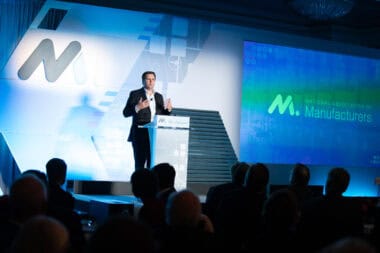Trump Picks Vance

Freshman Sen. J.D. Vance (R-OH) is Republican presidential nominee Donald Trump’s vice presidential pick, Trump announced Monday at the first day of the Republican National Convention (The Wall Street Journal, subscription).
The backdrop: “The pick comes amid widespread calls for unity following the assassination attempt at Trump’s rally in Pennsylvania on Saturday, when a gunman opened fire on the crowd. Trump said he suffered a gunshot wound to his ear. One rallygoer was killed and two others were critically wounded. The gunman was fatally shot by a Secret Service sniper.”
- NAM President and CEO Jay Timmons called for a renunciation of violence following the shooting. “Violence should never be the answer and must be clearly condemned, along with those who would foment it,” he said. “In America, we resolve our differences through our votes, not violence. … [A]ll Americans should commit ourselves to the peaceful expression of our ideas and our politics and to the protection of our democracy.”
Why it’s important: Vance—a former Marine and Yale Law School graduate who gained national fame with his 2016 memoir, “Hillbilly Elegy”—is expected to “be strongly focused on the people he fought so brilliantly for, the American [w]orkers and [f]armers in Pennsylvania, Michigan, Wisconsin, Ohio, Minnesota and far beyond,” Trump wrote in a social post on Monday, according to the Journal.
On the record: Timmons, who shares Ohio roots with Vance, said on Monday the vice presidential pick “understands the transformative power of manufacturing to improve the quality of life for everyone.” Vance previously shared what Timmons called his “powerful personal story” with the NAM Board of Directors.
- Vance “recognizes the role manufacturing plays in building strong communities and an exceptional nation, and he is committed to supporting the growth of our industry,” Timmons said. “The NAM is committed to working with all candidates to shape the manufacturing strategy in the next administration and advance the NAM’s ‘Competing to Win’ policy agenda for growing manufacturing in the U.S.”
